We don't need a long intro for this one: AMD's new Radeon RX 7600 XT is almost exactly the same as last year's RX 7600, but with a mild bump to the GPU's clock speed and 16GB of memory instead of 8GB. It also costs $329 instead of $269, the current MSRP (and current street price) for the regular RX 7600.
It's a card with a pretty narrow target audience: people who are worried about buying a GPU with 8GB of memory, but who aren't worried enough about future-proofing or RAM requirements to buy a more powerful GPU. It's priced reasonably well, at least—$60 is a lot to pay for extra memory, but $329 was the MSRP for the Radeon RX 6600 back in 2021. If you want more memory in a current-generation card, you generally need to jump into the $450 range (for the 12GB RX 7700 XT or the 16GB RTX 4060 Ti) or beyond.
| RX 7700 XT | RX 7600 | RX 7600 XT | RX 6600 | RX 6600 XT | RX 6650 XT | RX 6750 XT | |
|---|---|---|---|---|---|---|---|
| Compute units (Stream processors) | 54 (3,456) | 32 (2,048) | 32 (2,048) | 28 (1,792) | 32 (2,048) | 32 (2,048) | 40 (2,560) |
| Boost Clock | 2,544 MHz | 2,600 MHz | 2,760 MHz | 2,490 MHz | 2,589 MHz | 2,635 MHz | 2,600 MHz |
| Memory Bus Width | 192-bit | 128-bit | 128-bit | 128-bit | 128-bit | 128-bit | 192-bit |
| Memory Clock | 2,250 MHz | 2,250 MHz | 2,250 MHz | 1,750 MHz | 2,000 MHz | 2,190 MHz | 2,250 MHz |
| Memory size | 12GB GDDR6 | 8GB GDDR6 | 16GB GDDR6 | 8GB GDDR6 | 8GB GDDR6 | 8GB GDDR6 | 12GB GDDR6 |
| Total board power (TBP) | 245 W | 165 W | 190 W | 132 W | 160 W | 180 W | 250 W |
The fact of the matter is that this is the same silicon we've already seen. The clock speed bumps provide a small across-the-board performance uplift, and the impact of the extra RAM becomes apparent in a few of our tests. But the card doesn't fundamentally alter the AMD-vs.-Nvidia-vs.-Intel dynamic in the $300-ish graphics card market, though it addresses a couple of the regular RX 7600's most glaring weaknesses.
Performance and power
| Gaming testbed | |
|---|---|
| CPU | AMD Ryzen 7 7800X3D (provided by AMD) |
| Motherboard | ASRock X670E Taichi (provided by AMD) |
| RAM | 32GB (2x16GB) G.Skill Trident Z5 Neo (provided by AMD), running at DDR5-6000 |
| SSD | Western Digital Black SN850 1TB (provided by Western Digital) |
| Power supply | EVGA Supernova 850 P6 (provided by EVGA) |
| CPU cooler | 280 mm Corsair iCure H115i Elite Capellix AIO |
| Case | Lian Li O11 Air Mini |
| OS | Windows 11 22H2 with Core Isolation on, Memory Integrity off |
| Drivers | Nvidia cards: Driver 551.15 AMD RX 7600: Adrenalin 23.12.1 AMD RX 7600 XT: Pre-release driver 23.40.0.1.15 Intel Arc: Driver 31.0.101.5085 |
AMD's official spec sheet for the 7600 XT advertises a 9.8 percent GPU game clock increase compared to the regular 7600, and a 3.8 percent boost clock increase. In most cases, with the XFX card we tested, performance improvements in most games were firmly in that low-single-digit range at 1080p and 1440p.
One broad exception to this, and one specific exception, based on the tests we've run: Generally, games with heavy ray-tracing effects—Cyberpunk and Returnal, namely—improved more than the non-ray-traced games we tested; at 1080p, we saw high-single-digit improvements, and at 1440p we actually measured double-digit speed increases. This is, unfortunately, not enough to make the RX 7600 XT's ray-tracing performance particularly great or competitive, with the RTX 4060 running at the same resolutions and settings.


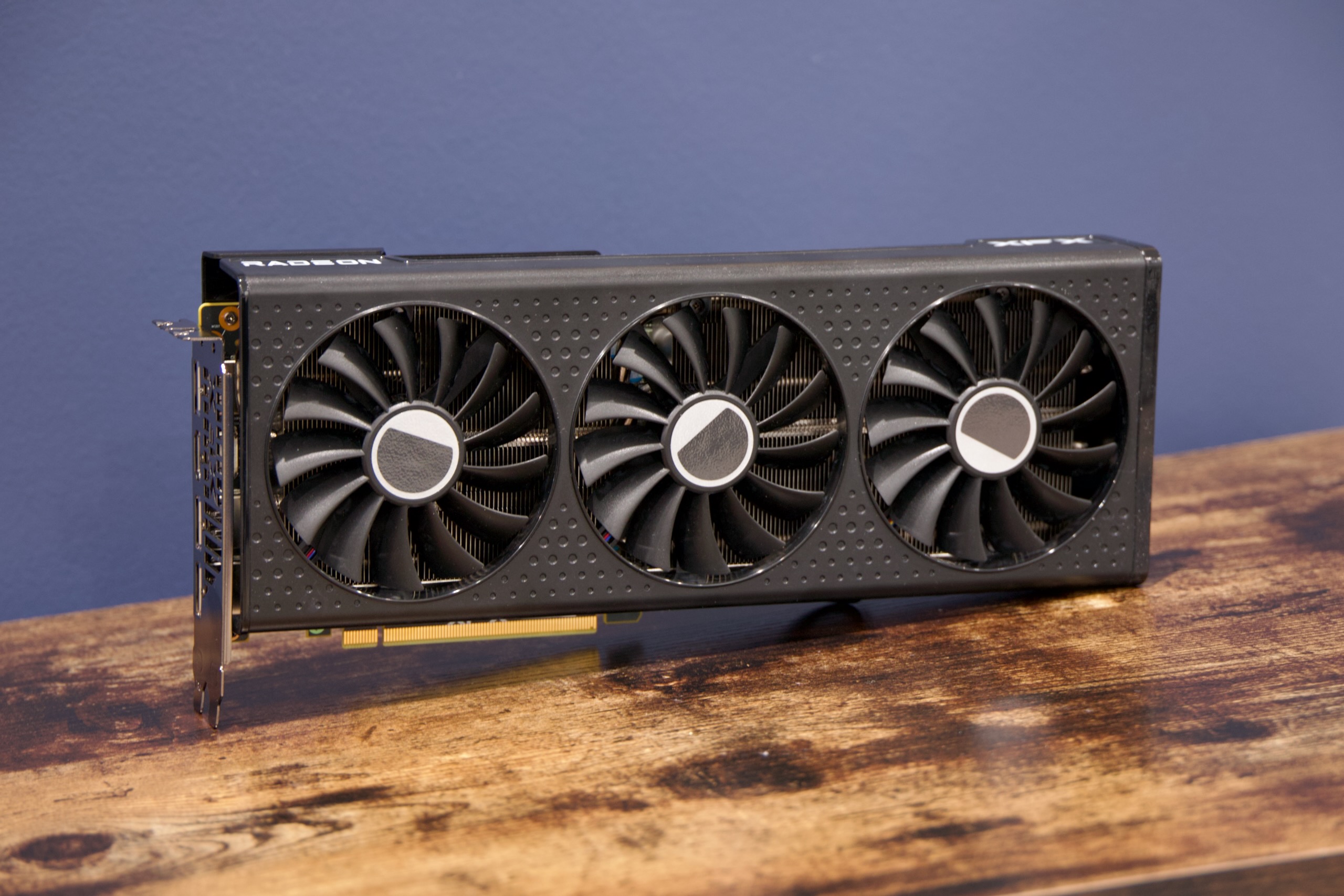
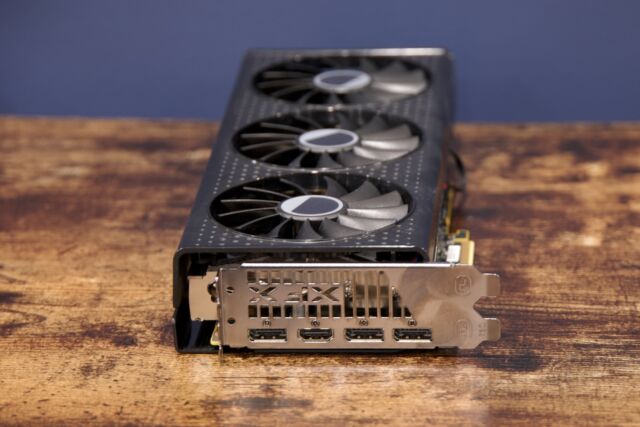

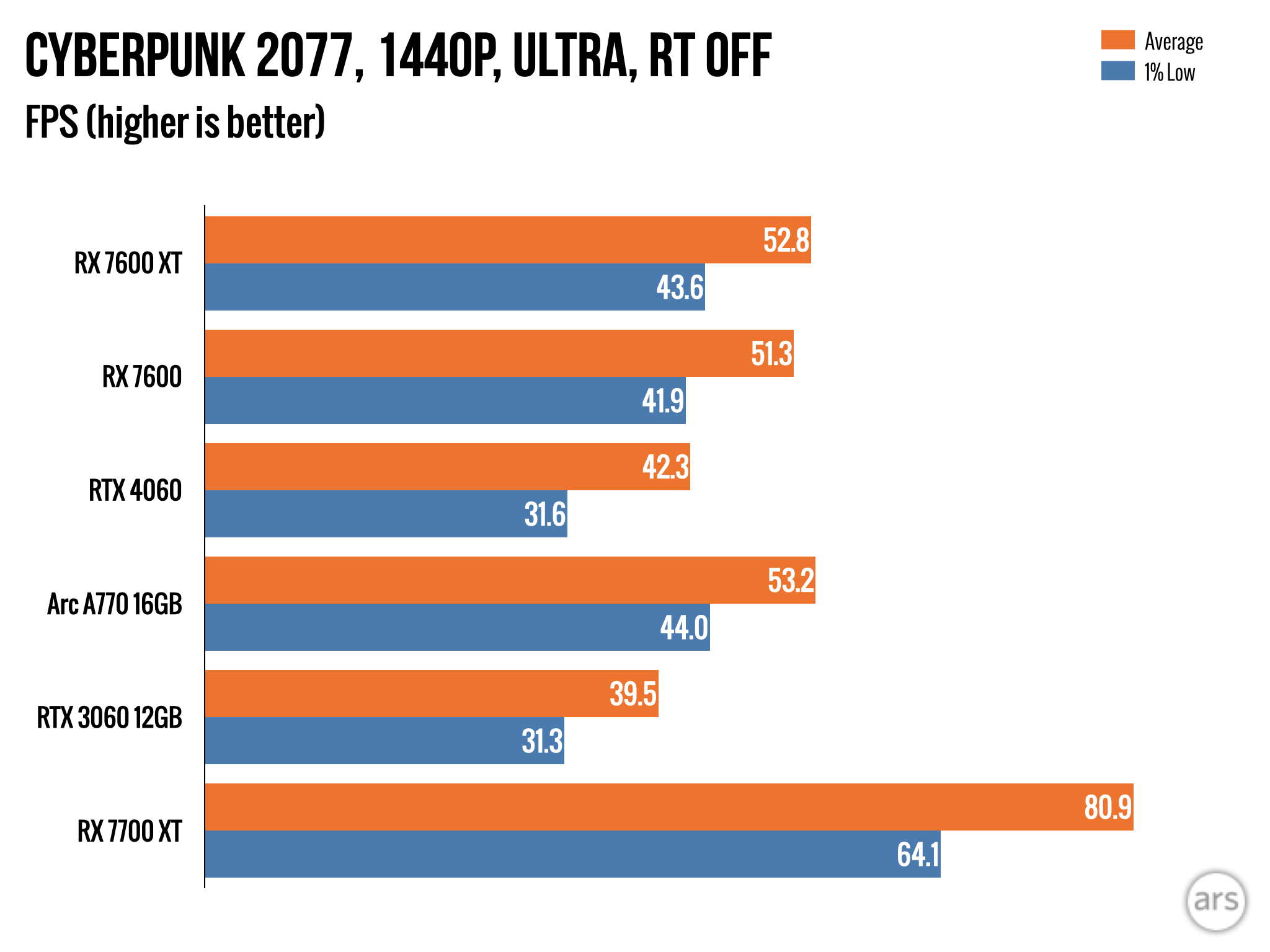






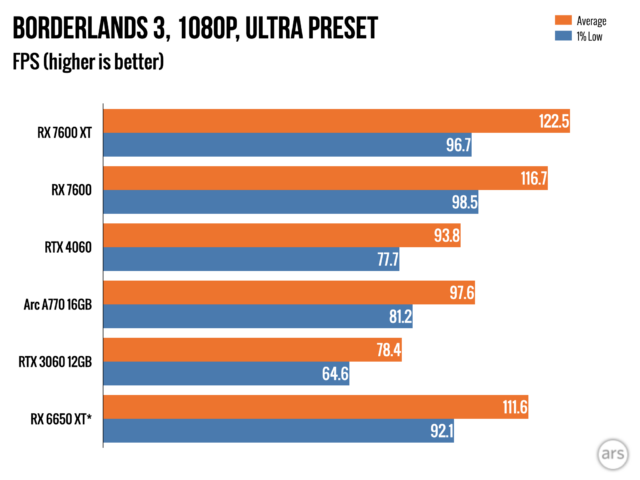

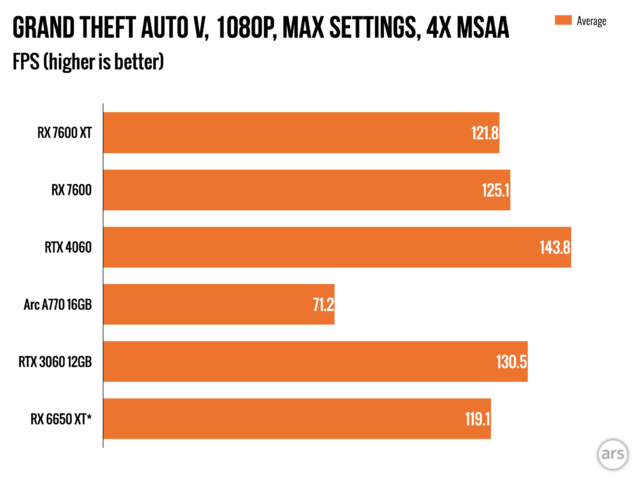
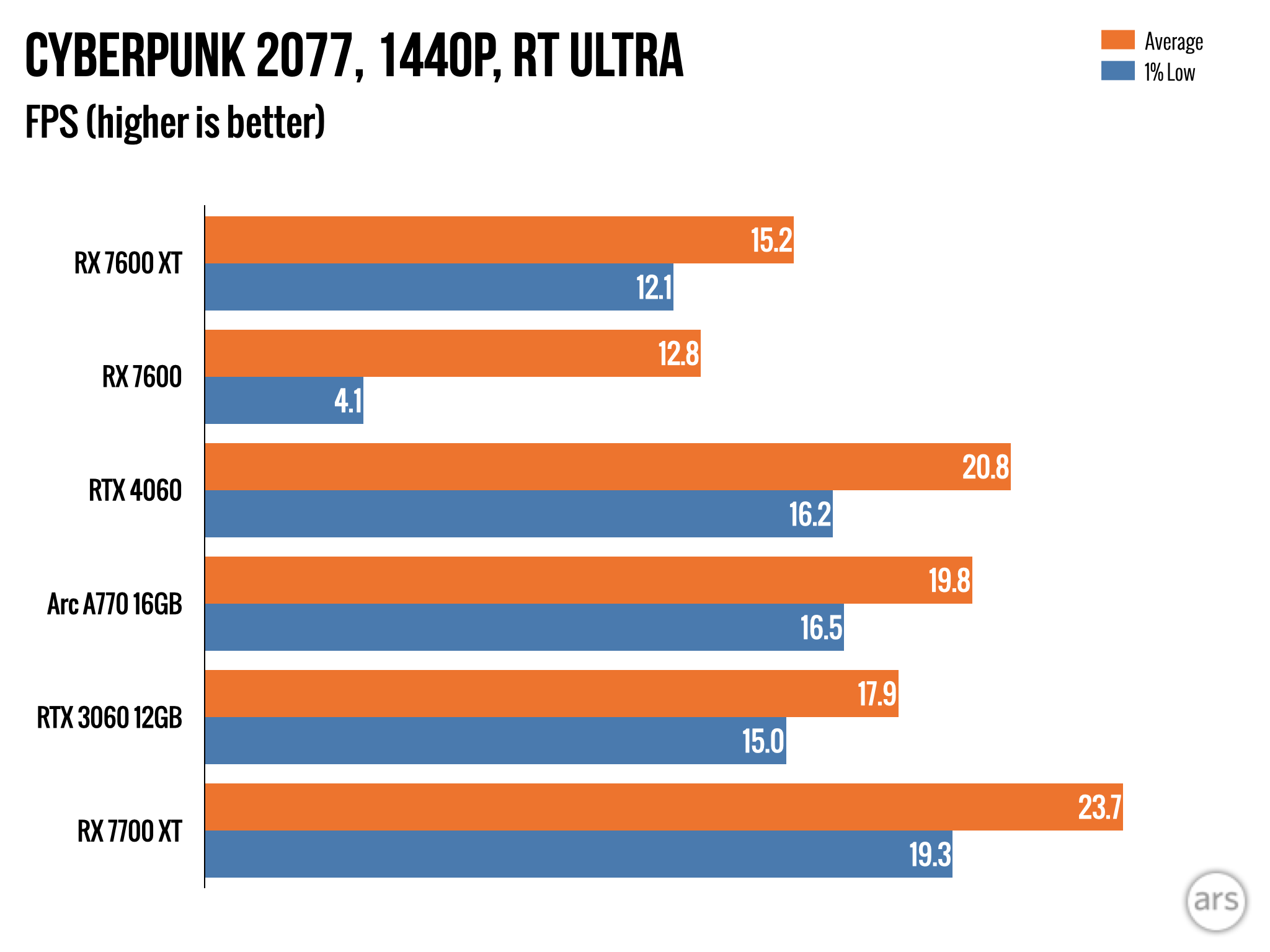









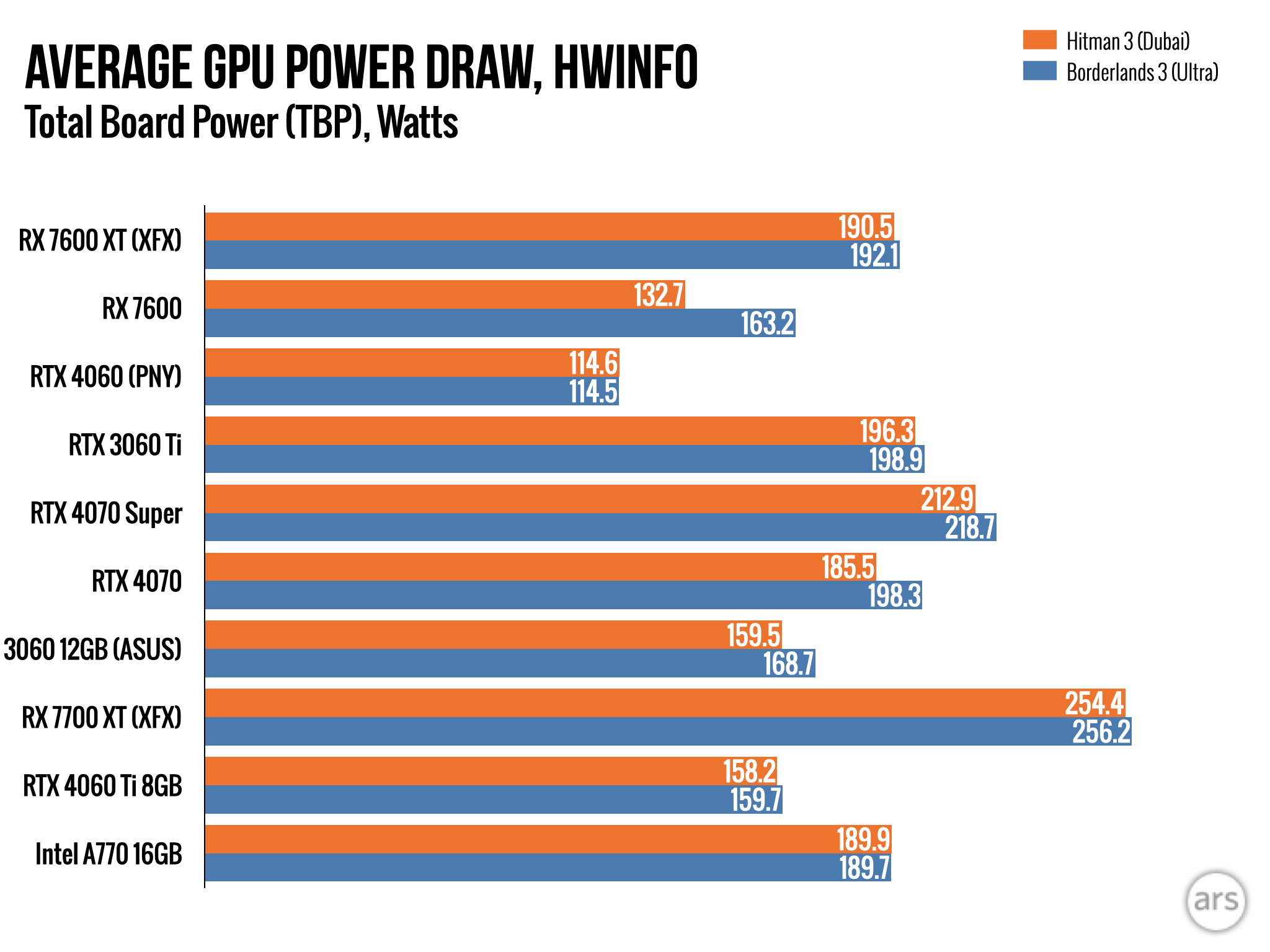
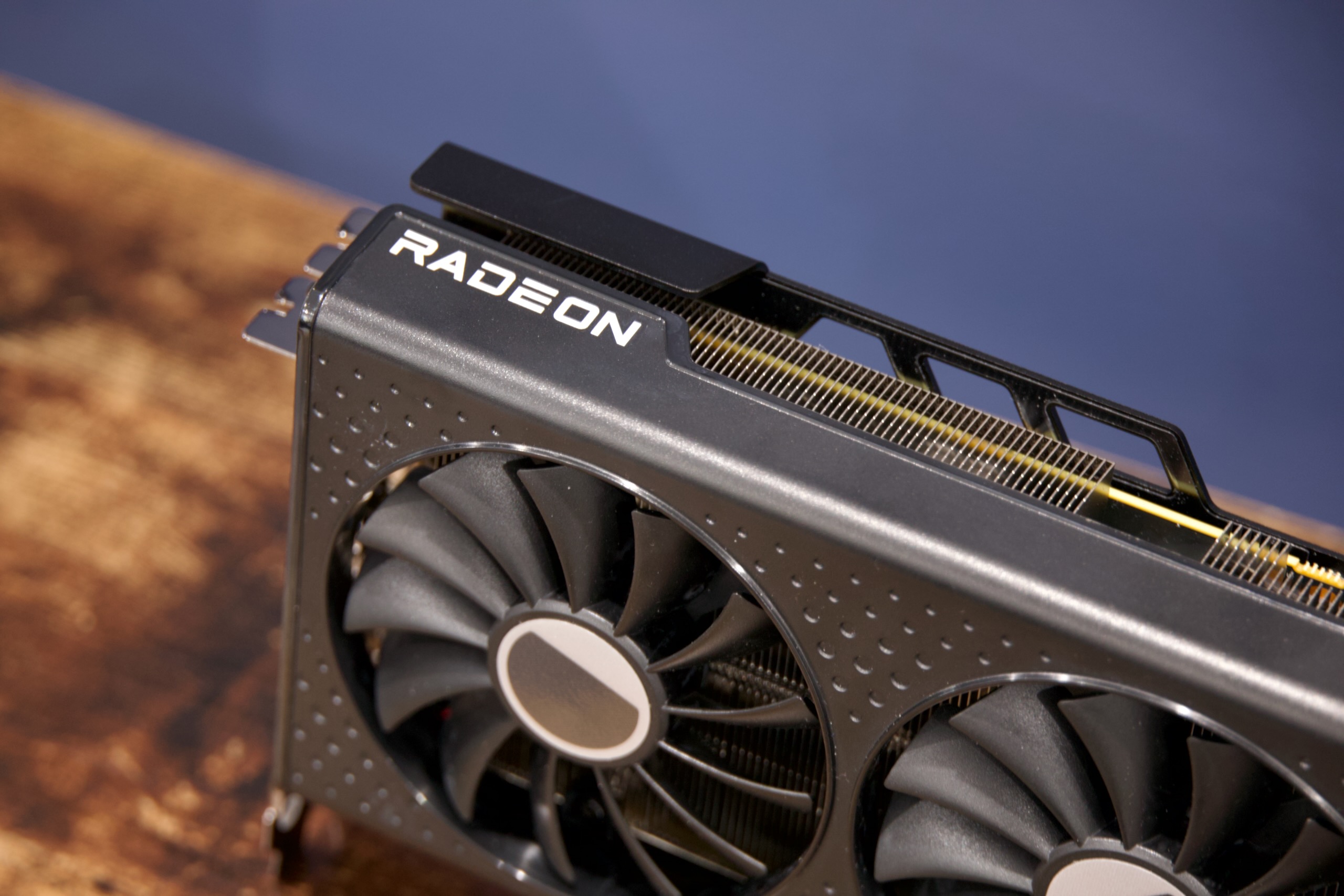

 Loading comments...
Loading comments...
